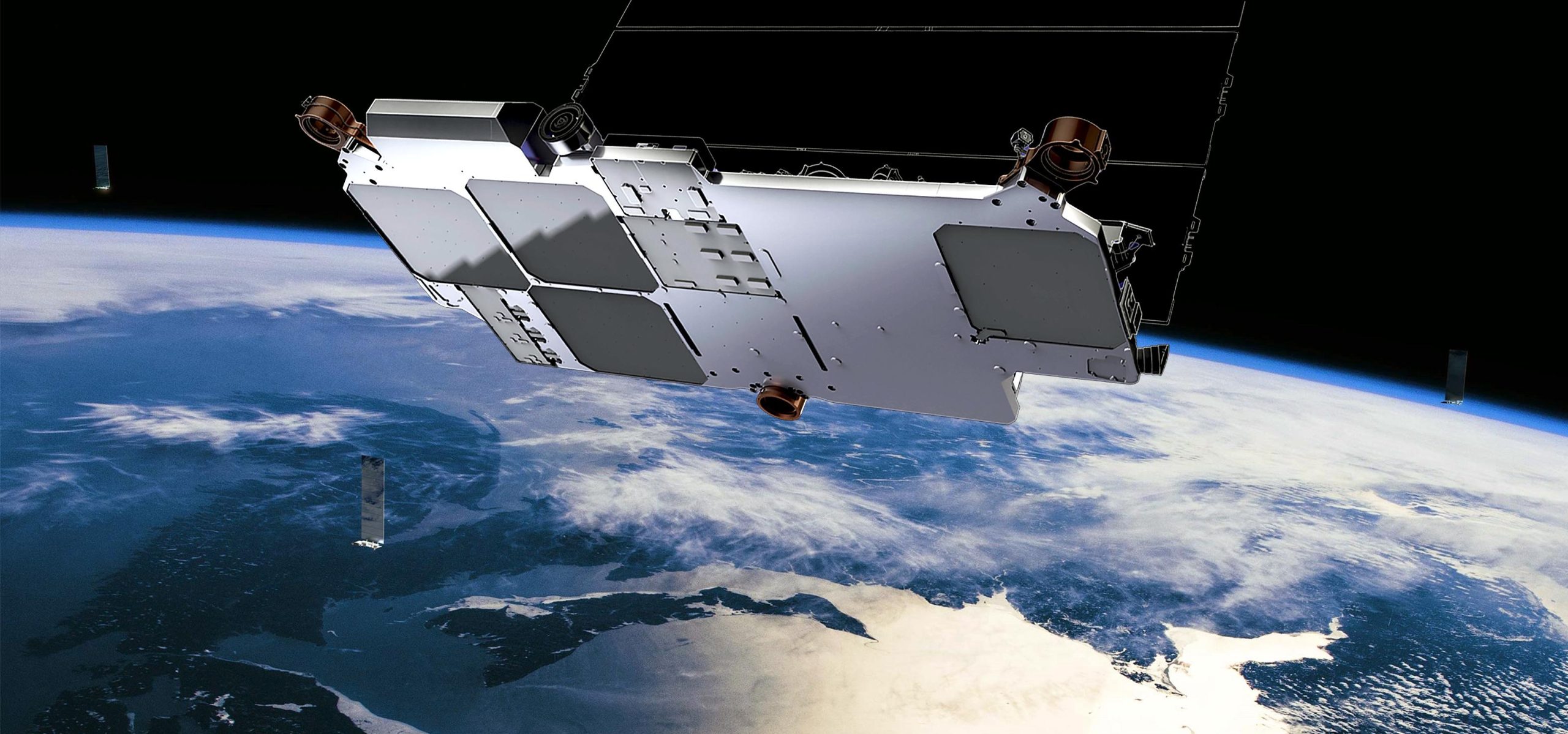
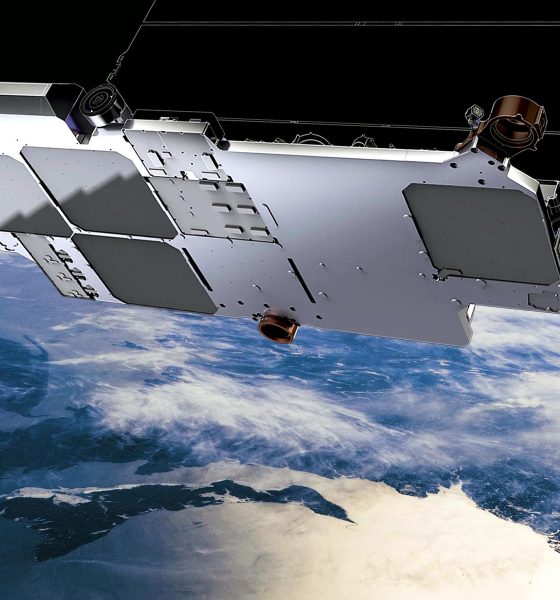
News
SpaceX says upgraded Starlink satellites have better bandwidth, beams, and more
Just hours ago, SpaceX successfully launched its second batch of 60 Starlink satellites, featuring a variety of upgrades as part of the move from v0.9 to v1.0 spacecraft. During SpaceX’s launch webcast, the hosts revealed a number of intriguing new details about those upgrades, shedding a bit more light on what exactly has changed.
SpaceX launched its first dedicated Starlink mission in May 2019, placing 60 “v0.9” satellites in low Earth orbit (LEO) in what was essentially a beta test at an unprecedented scale. At the time, SpaceX and CEO Elon Musk disseminated a substantial amount of information, essentially taking the veil off of (part of) the company’s Starlink satellite program. In terms of the basics, Starlink v0.9 satellites were said to weigh approximately ~225 kg (500 lb) apiece, although the final mass – said to be the heaviest payload SpaceX had ever launched – suggested that that figure excluded the mass of krypton propellant.
All told, Musk said that the payload weighed ~18.5 tons but never clarified whether that was in imperial or metric units, leaving a potential range of 16,700-18,500 kilograms (36,800-40,800 pounds). In general, Musk was quite confident that SpaceX’s custom-built phased array antennas were effectively the best in the world even in their v0.9 beta-test iteration. Additionally, he noted that inter-satellite optical (i.e. laser) links would have to wait a generation or two before becoming part of the operational constellation.
Ch-ch-ch-changes
With SpaceX’s Starlink-1 launch, the second 60-satellite mission, the company debuted Starlink ‘v1.0’ satellites with a range of changes and upgrades that fall under two main categories: structures and communications.
Prior to the November 11th webcast, SpaceX’s official pre-launch press kit was far less revealing than Starlink v0.9’s but did note that v1.0 satellites have been upgraded to be “100% demisable”. This means that when each spacecraft reenters Earth’s atmosphere, everything down to the last shred of mylar is now expected to burn up before reaching the ground, reducing the (already miniscule) risk of debris harming people or property. Similarly, SpaceX implied several months before launch that v1.0 spacecraft would include tweaks to limit their reflectiveness after the astronomy community stoked fears about potential impacts.
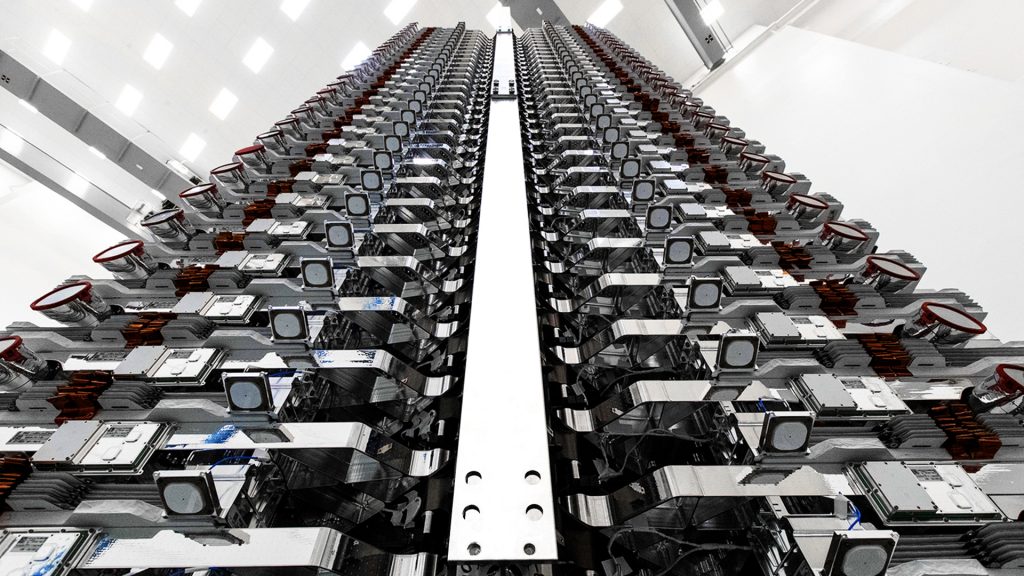
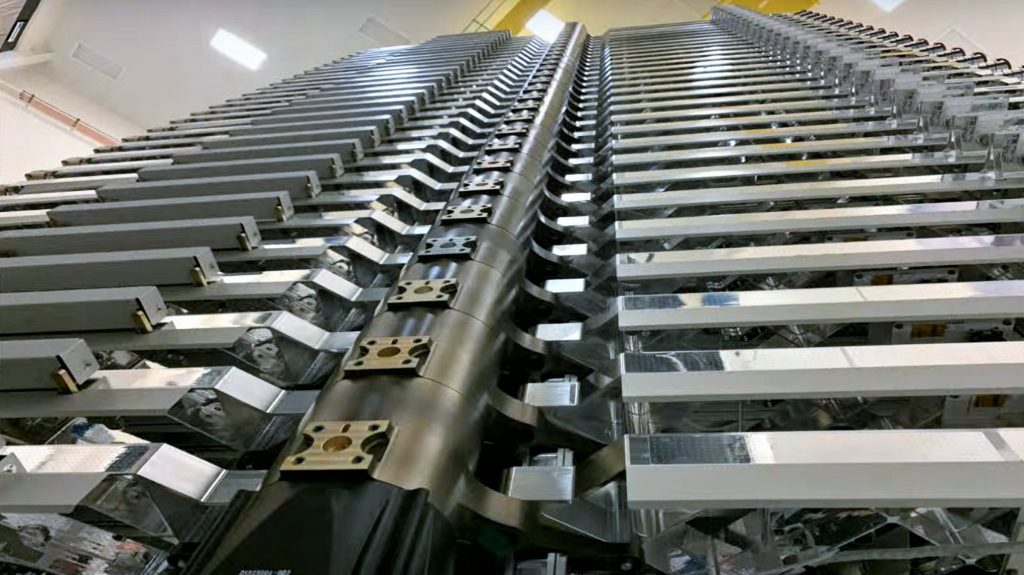
Aside from a general improvement to the overall visual fit-and-finish of the v1.0 spacecraft, SpaceX’s official comments on the matter indicated that the most substantial changes between v0.9 and v1.0 were more related to each spacecraft’s advanced electronics and payloads. In the case of Starlink, each satellite’s primary payload is a high-performance suite of electronically-steered phased array antennas. Initially developed to improve the flexibility of tracking and scanning radars used by military fighter aircraft, phased array antennas (and radar) allow multiple beams to be aimed without physically moving the antenna.
SpaceX says that Starlink v1.0 satellites added a number of Ka-band antennas alongside upgraded Ku-band hardware similar to what was installed on Starlink v0.9. Ka and Ku refer to similar but different communications frequencies, with Ku-band generally offering greater reliability and cloud/rain tolerance, while Ka-band is a bit more sensitive to environmental factors but offers a substantially higher theoretical bandwidth.
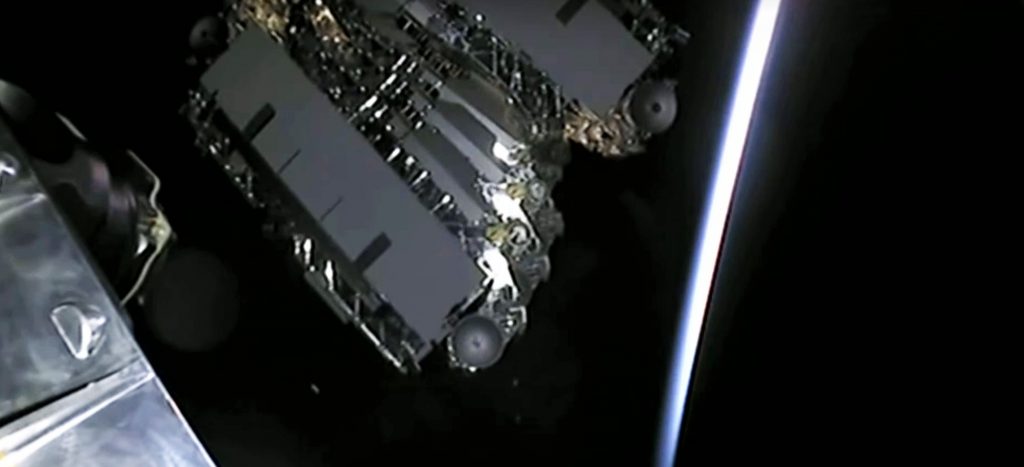
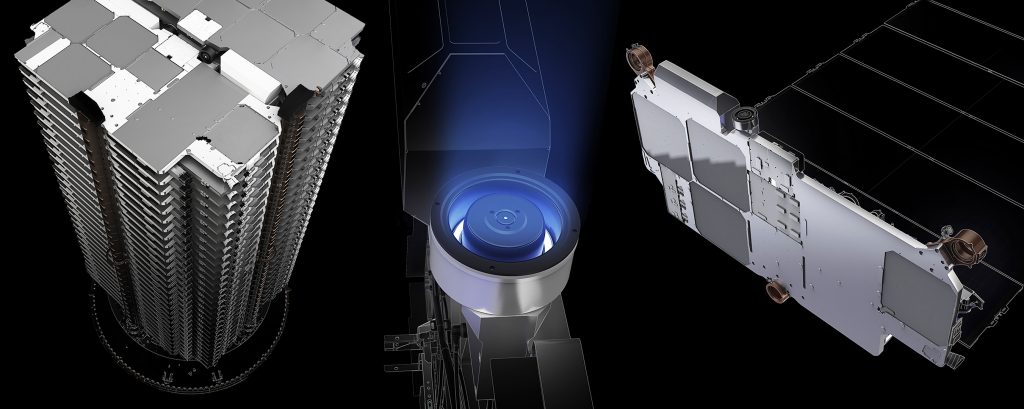
According to SpaceX engineers speaking during the Starlink-1 launch webcast, Starlink v1.0 satellites offer an unexpected 400% increase in overall bandwidth, meaning they can theoretically transmit four times as much data per any given second. Additionally, Starlink v1.0 satellites were said to feature antennas with twice as many steerable beams, meaning that they can effectively serve two times as many regions simultaneously. It’s unclear if the addition of Ka-band antennas is the sole source of these substantial improvements.
Furthermore, during the Starlink v0.9 launch, SpaceX CEO Elon Musk indicated that the 60 satellites represented a bandwidth of more than 1 terabit per second (Tbps), translating to ~17 Gbps per satellite. More likely than not, Musk was speaking aspirational and the v0.9 satellites actually represented more like ~200-300 Gbps worth of throughput, with the additional of Ka-band antennas and perhaps general technology upgrades bringing v1.0 satellites to a nominal ~17 Gbps apiece.
For now, 60 Starlink v1.0 satellites are now in orbit and are rapidly spreading out after their bizarre but effective blob-style deployment. With any luck, all 60 will successfully deploy their solar arrays and begin propelling themselves towards their final operating orbits with krypton-fueled ion thrusters. Stay tuned for updates from SpaceX!
Check out Teslarati’s Marketplace! We offer Tesla accessories, including for the Tesla Cybertruck and Tesla Model 3.

News
Tesla hosts Rome Mayor for first Italian FSD Supervised road demo
The event marked the first time an Italian mayor tested the advanced driver-assistance system in person in Rome’s urban streets.
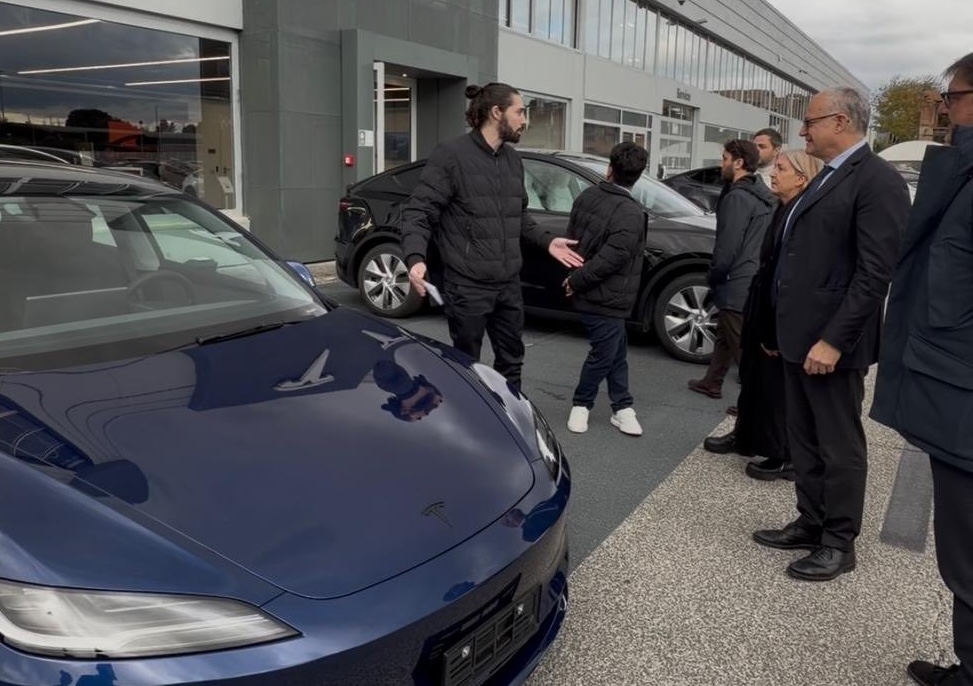
Tesla definitely seems to be actively engaging European officials on FSD’s capabilities, with the company hosting Rome Mayor Roberto Gualtieri and Mobility Assessor Eugenio Patanè for a hands-on road demonstration.
The event marked the first time an Italian mayor tested the advanced driver-assistance system in person in Rome’s urban streets. This comes amid Tesla’s push for FSD’s EU regulatory approvals in the coming year.
Rome officials experience FSD Supervised
Tesla conducted the demo using a Model 3 equipped with Full Self-Driving (Supervised), tackling typical Roman traffic including complex intersections, roundabouts, pedestrian crossings and mixed users like cars, bikes and scooters.
The system showcased AI-based assisted driving, prioritizing safety while maintaining flow. FSD also handled overtakes and lane decisions, though with constant driver supervision.
Investor Andrea Stroppa detailed the event on X, noting the system’s potential to reduce severe collision risks by up to seven times compared to traditional driving, based on Tesla’s data from billions of global fleet miles. The session highlighted FSD’s role as an assistance tool in its Supervised form, not a replacement, with the driver fully responsible at all times.
Path to European rollout
Tesla has logged over 1 million kilometers of testing across 17 European countries, including Italy, to refine FSD for local conditions. The fact that Rome officials personally tested FSD Supervised bodes well for the program’s approval, as it suggests that key individuals are closely watching Tesla’s efforts and innovations.
Assessor Patanè also highlighted the administration’s interest in technologies that boost road safety and urban travel quality, viewing them as aids for both private and public transport while respecting rules.
Replies on X urged involving Italy’s Transport Ministry to speed approvals, with one user noting, “Great idea to involve the mayor! It would be necessary to involve components of the Ministry of Transport and the government as soon as possible: it’s they who can accelerate the approval of FSD in Italy.”
News
Tesla FSD (Supervised) blows away French journalist after test ride
Cadot described FSD as “mind-blowing,” both for the safety of the vehicle’s driving and the “humanity” of its driving behaviors.
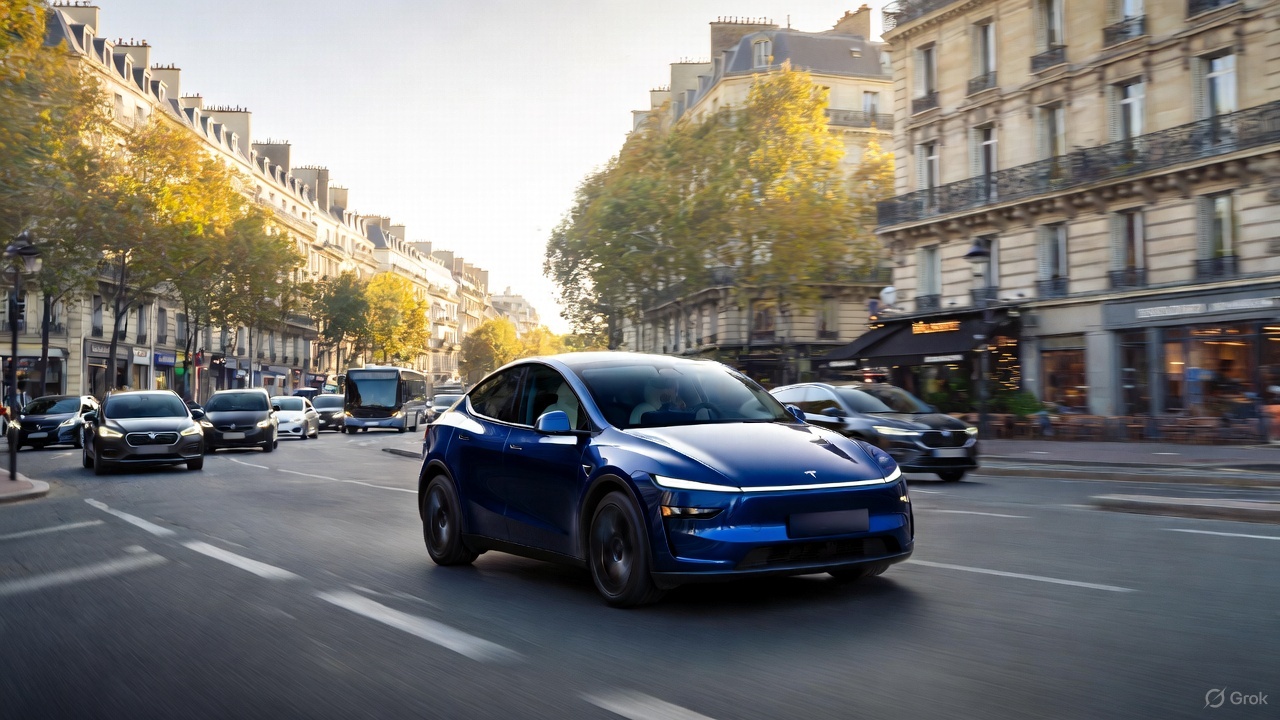
Tesla’s Full Self-Driving (Supervised) seems to be making waves in Europe, with French tech journalist Julien Cadot recently sharing a positive first-hand experience from a supervised test drive in France.
Cadot, who tested the system for Numerama after eight years of anticipation since early Autopilot trials, described FSD as “mind-blowing,” both for the safety of the vehicle’s driving and the “humanity” of its driving behaviors.
Julien Cadot’s FSD test in France
Cadot announced his upcoming test on X, writing in French: “I’m going to test Tesla’s FSD for Numerama in France. 8 years I’ve been waiting to relive the sensations of our very first contact with the unbridled Autopilot of the 2016s.” He followed up shortly after with an initial reaction, writing: “I don’t want to spoil too much because as media we were allowed to film everything and I have a huge video coming… But: it’s mind-blowing! Both for safety and for the ‘humanity’ of the choices.”
His later posts detailed FSD’s specific maneuvers that he found particularly compelling. These include the vehicle safely overtaking a delivery truck by inches, something Cadot said he personally would avoid to protect his rims, but FSD handled flawlessly. He also praised FSD’s cyclist overtakes, as the system always maintained the required 1.5-meter distance by encroaching on the opposite lane when clear. Ultimately, Cadot noted FSD’s decision-making prioritized safety and advancement, which is pretty remarkable.
FSD’s ‘human’ edge over Autopilot
When asked if FSD felt light-years ahead of standard Autopilot, Cadot replied: “It’s incomparable, it’s not the same language.” He elaborated on scenarios like bypassing a parked delivery truck across a solid white line, where FSD assessed safety and proceeded just as a human driver might, rather than halting indefinitely. This “humanity” impressed Cadot the most, as it allowed FSD to fluidly navigate real-world chaos like urban Paris traffic.
Tesla is currently hard at work pushing for the rollout of FSD to several European countries. Recent reports have revealed that Tesla has received approval to operate 19 FSD test vehicles on Spain’s roads, though this number could increase as the program develops. As per the Dirección General de Tráfico (DGT), Tesla would be able to operate its FSD fleet on any national route across Spain. Recent job openings also hint at Tesla starting FSD tests in Austria. Apart from this, the company is also holding FSD demonstrations in Germany, France, and Italy.
Elon Musk
Tesla Optimus shows off its newest capability as progress accelerates

Tesla Optimus showed off its newest capability as progress on the project continues to accelerate toward an ultimate goal of mass production in the coming years.
Tesla is still developing Optimus and preparing for the first stages of mass production, where units would be sold and shipped to customers. CEO Elon Musk has always marketed the humanoid robot as the biggest product in history, even outside of Tesla, but of all time.
He believes it will eliminate the need to manually perform monotonous tasks, like cleaning, mowing the lawn, and folding laundry.
However, lately, Musk has revealed even bigger plans for Optimus, including the ability to relieve humans of work entirely within the next 20 years.
JUST IN: Elon Musk says working will be ‘optional’ in less than 20 years because of AI and robotics. pic.twitter.com/l3S5kl5HBB
— Watcher.Guru (@WatcherGuru) November 30, 2025
Development at Tesla’s Artificial Intelligence and Robotics teams has progressed, and a new video was shown of the robot taking a light jog with what appeared to be some pretty natural form:
Just set a new PR in the lab pic.twitter.com/8kJ2om7uV7
— Tesla Optimus (@Tesla_Optimus) December 2, 2025
Optimus has also made several public appearances lately, including one at the Neural Information Processing Systems, or NeurIPS Conference. Some spectators shared videos of Optimus’s charging rig, as well as its movements and capabilities, most interestingly, the hand:
You have to hand it to Elon 🤟 pic.twitter.com/fZKDlmGAbe
— Ric Burton · NeurIPS 2025 (@_ricburton) December 2, 2025
The hand, forearm, and fingers have been one of the most evident challenges for Tesla in recent times, especially as it continues to work on its 3rd Generation iteration of Optimus.
Musk said during the Q3 Earnings Call:
“I don’t want to downplay the difficulty, but it’s an incredibly difficult thing, especially to create a hand that is as dexterous and capable as the human hand, which is incredible. The human hand is an incredible thing. The more you study the human hand, the more incredible you realize it is, and why you need four fingers and a thumb, why the fingers have certain degrees of freedom, why the various muscles are of different strengths, and fingers are of different lengths. It turns out that those are all there for a reason.”
The interesting part of the Optimus program so far is the fact that Tesla has made a lot of progress with other portions of the project, like movement, for example, which appears to have come a long way.
However, without a functional hand and fingers, Optimus could be rendered relatively useless, so it is evident that it has to figure this crucial part out first.








